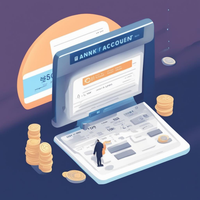Online and Mobile Banking

In today's rapidly evolving technology landscape, the banking industry has undergone a significant transformation. The advent of online and mobile banking has revolutionized the way customers interact with their financial institutions. This overview aims to provide a comprehensive understanding of banking products and services along with insights into the functionalities offered by online and mobile banking platforms.
Banking Products:
Banks offer a wide array of products that cater to different customer needs. These products include:
Savings Accounts: A savings account is designed to store money securely while providing interest earnings on deposited funds.
Checking Accounts: Also known as current accounts, these enable individuals or businesses to deposit funds, write checks, make electronic payments, and access their money easily.
Certificates of Deposit (CDs): CDs offer higher interest rates compared to regular savings accounts in exchange for fixed time deposits. Customers commit to keeping their funds untouched for a specific period.
Loans: Banks provide various loan options like personal loans, car loans, home loans (mortgages), and business loans. These allow customers to borrow money at an agreed-upon interest rate for specific purposes.
Credit Cards: Banks issue credit cards that enable customers to make purchases based on pre-approved lines of credit with payment due dates either in full or through installments.
Debit Cards: Linked directly to customers' checking accounts, debit cards facilitate convenient electronic transactions without borrowing money or incurring debt.
Wealth Management Services: Financial institutions also offer customized investment solutions like mutual funds, stocks & bonds trading platforms, retirement planning advice, insurance products recommendation etc., tailored according to individual wealth goals.
Online Banking:
Online banking refers to the provision of traditional banking services over the internet using web-based applications or bank-specific software programs accessible through desktop computers or laptops connected to the internet via secure channels.
- Key Features of Online Banking:
- Account Balances: Customers can check their account balances and view the transactions in real-time.
- Fund Transfers: Users can transfer funds between their own accounts or to other external accounts swiftly.
- Bill Payments: Online banking platforms enable customers to pay their bills electronically, saving time and effort.
- Mobile Deposits: With online banking, users can deposit checks remotely by capturing images of the checks using their smartphones or tablets.
- E-Statements: Banks provide electronic statements (e-statements) that are accessible online, replacing monthly paper statements.
Mobile Banking:
Mobile banking refers to accessing banking services through dedicated mobile applications designed for smartphones and tablets. These apps are connected to a customer's bank account(s) and offer a range of functionalities similar to online banking.
- Key Features of Mobile Banking: - Account Access: Customers can access their accounts anytime, anywhere using their mobile devices. - Notifications & Alerts: Real-time notifications about account activities such as balance changes, deposits, withdrawals, payments etc., help customers stay updated on financial transactions instantaneously. - Transfers & Payments: Users can make quick fund transfers between accounts and pay bills seamlessly from within the mobile app environment without the need for physical cards or cash.
Advantages of Online and Mobile Banking:
Convenience: Customers have round-the-clock access to their accounts from anywhere in the world with an internet connection.
Speedy Transactions: Funds transfers and bill payments take place instantaneously, offering convenience and saving time.
Cost-Efficiency: By minimizing paperwork and branch visits for routine transactions, online and mobile banking platforms reduce operational costs for both banks and customers.
Enhanced Security Measures: Advanced security protocols such as encryption techniques, secure authentication methods like biometrics (fingerprint scan/face recognition), OTPs (One-Time Passwords), and transaction alerts ensure secure banking experiences for customers.
Personalized Experience: Online and mobile banking platforms often provide personalized recommendations, financial management tools, and insights to help customers make better financial decisions.
Accessibility for the Unbanked: These services play a vital role in providing access to banking facilities for individuals who are geographically isolated or lack traditional bank account accessibility.
In conclusion, online and mobile banking have transformed the ways both individuals and businesses interact with their banks. Banking products and services offered through these channels provide convenience, speed, cost-efficiency, enhanced security measures, personalization features, and increased accessibility. As technology continues to advance, the rise of fintech innovations promises even greater improvements in our banking experience in the future.
Sponsored
Sponsored
Sponsored
Explore More:

Operational Risk
Operational risk is the potential for loss resulting from inadequate or failed internal...

Market Risk
Risk management in banking is a critical aspect of the banking industry. Managing...

Credit Risk
Risk management in banking is a critical aspect of the banking industry. Managing...

Risk Management in Banking
Risk management in banking is a critical aspect of the banking industry. Managing...

Glass-Steagall Act
The Glass-Steagall Act, also known as the Banking Act of 1933, was an...

Dodd-Frank Act
The Dodd-Frank Act, officially known as the Dodd-Frank Wall Street Reform and Consumer...

Basel Accords
Banking regulations refer to the laws, rules, and guidelines imposed by regulatory authorities...

Banking Regulations
Banking regulations refer to the laws, rules, and guidelines imposed by regulatory authorities...

Cash Flow Statement
The cash flow statement is an important financial statement for banks as it...

Income Statement
The income statement is an essential component of a bank's financial statements. It...

Balance Sheet
The balance sheet is one of the most important financial statements used by...

Bank Financial Statements
Bank financial statements provide a comprehensive overview of a bank's financial performance and...

Credit Cards
Credit cards are one of the most prominent banking products offered by financial...

Understanding Different Types of Bank Loans: Features and Benefits for Personal and Business Financing
Loans are a core offering of banking institutions, providing individuals and businesses with...

Checking Accounts
A checking account is one of the most common banking products used by...

Saving Accounts
Introduction In the world of banking, saving accounts are one of the most...